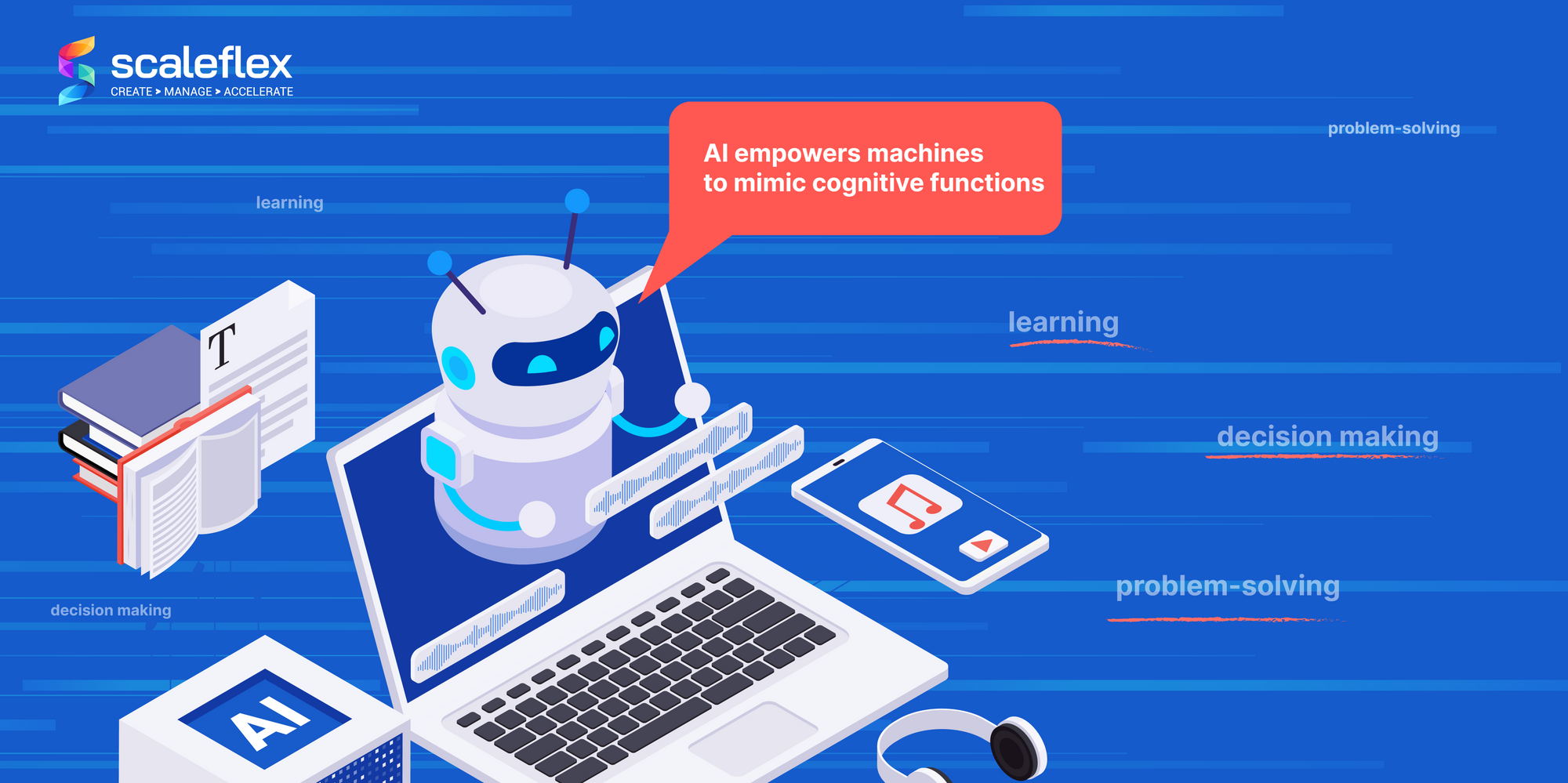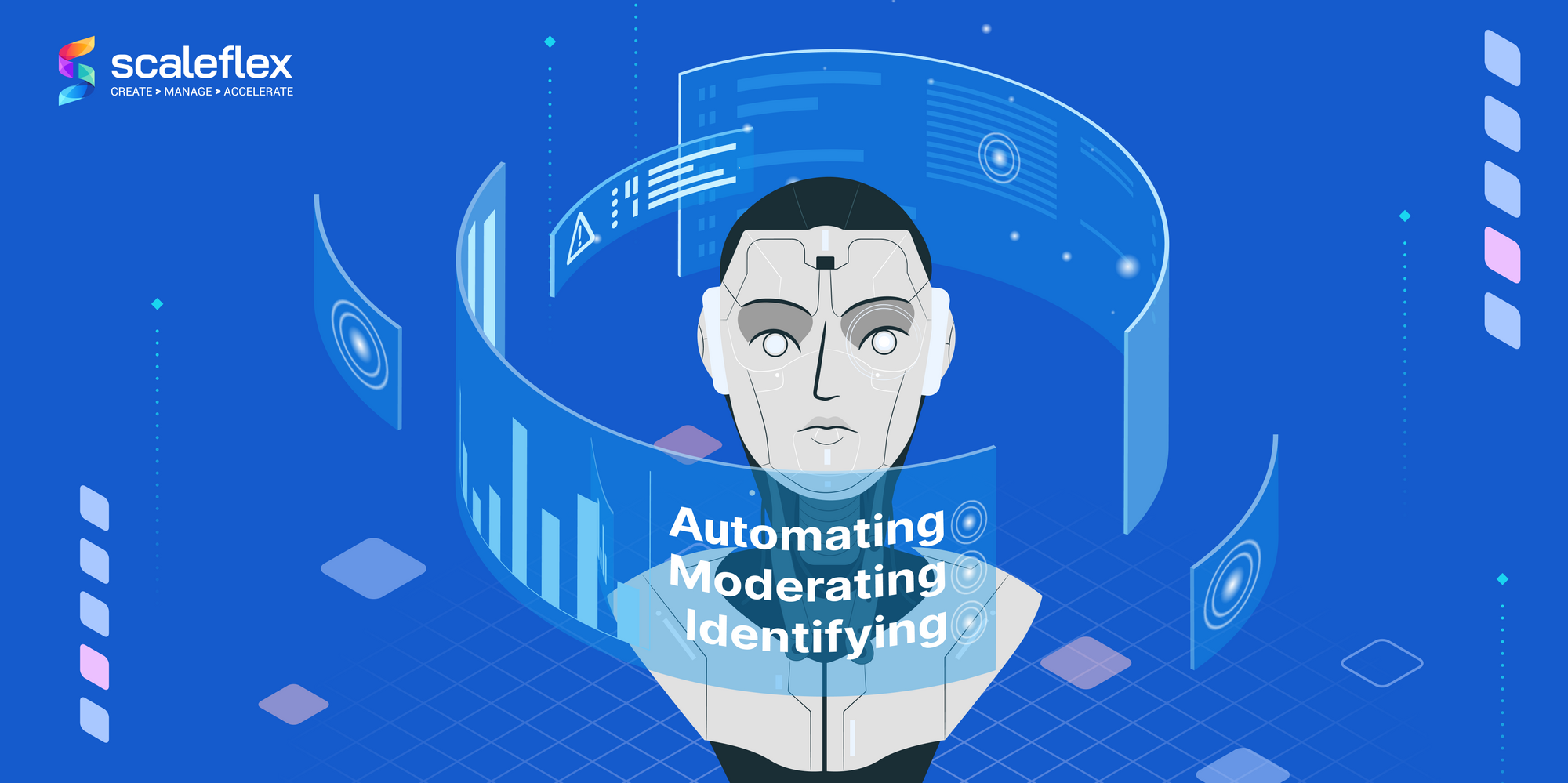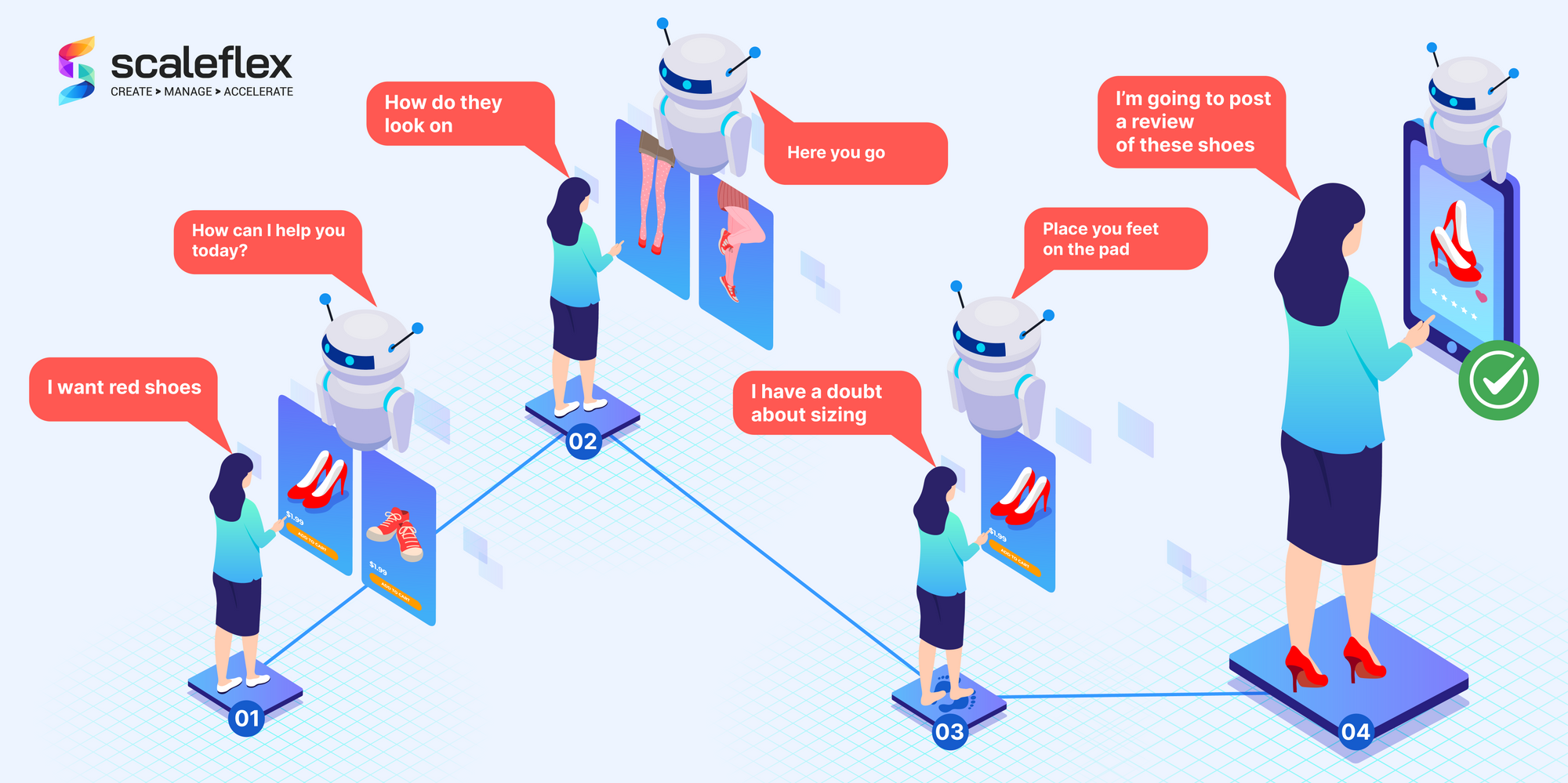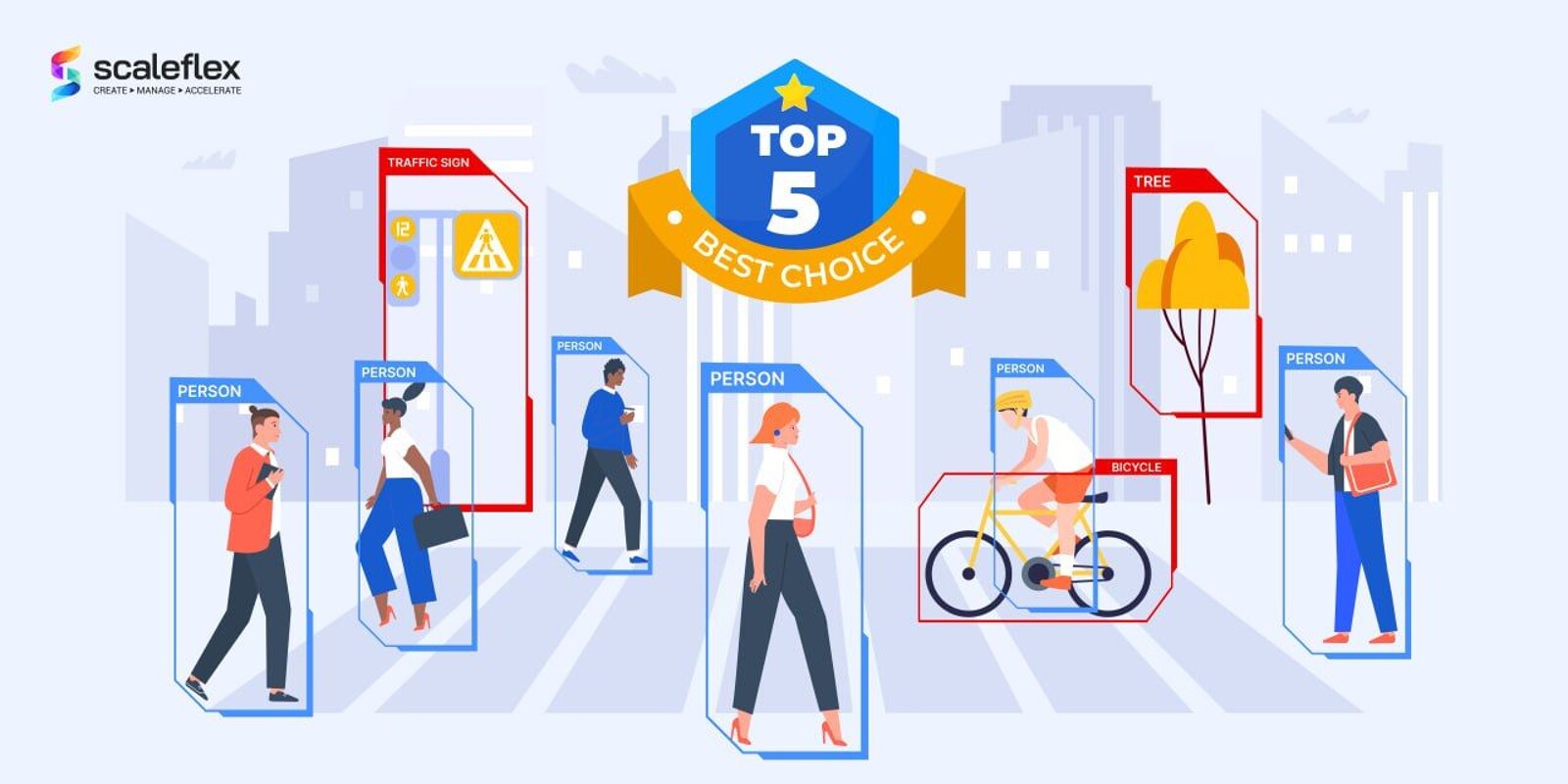Visual AI in 2025: Importance, Benefits and Real Business Use Cases
The universe of Artificial Intelligence (AI) is a captivating one, where machines aren’t limited to computing: they actually learn, adapt and surprise. In its purest essence, AI refers to the creation of smart algorithms that gift machines the ability of mimicking cognitive functions such as learning, problem solving and decision making.
In the grand field of technological evolution, AI is currently hogging the spotlight. Businesses are now tapping into AI functionalities in every field to enhance efficiency and innovation. You can rely on AI to analyze vast datasets, foresee trends, and make strategic recommendations.

As businesses navigate the digital landscape, AI boosts innovation and offers unique development opportunities. From automating mundane tasks to unlocking the mysteries hidden in data, AI is the backstage magician ensuring that companies stay ahead in the competition.
The impact of automating mundane tasks and correctly interpreting data can render beautiful results for any business. Of the different types of Artificial Intelligence that are currently available in the market, Visual AI poses the greatest strategic advantage for businesses. We’re going to see exactly how.
The Importance of Visuals in Today's Business Landscape
In today’s digital era, visuals have a vital importance, as they set the rhythm and often times the success of online interactions. In an age where attention spans are shortening by the second, and by the generation, visuals have become the cornerstone of online communication. Our human brains are wired for visual storytelling, and they crave the instant allure of captivating images, or the immersive experience of well-crafted videos.
Visuals are no longer just nice-to-haves: they’ve become the backbone of online communication, cutting through the noise of social media in a world where people are scrolling more absent-mindedly than ever before. A single well-crafted image speaks volumes, while videos can convey messages in ways that words struggle to match. Beyond this technical mismatch, the underlying reality is simple: people don’t want to read paragraphs anymore.
Businesses, both big and small, have recognized this shift and quickly caught on to these trends. Visuals aren’t only for social media, they’re essential for the success of any digital strategy. Brands are using them as powerful tools to connect with their audience, to be seen and understood in a single glance. Clients have made the message clear: visuals are the main elements responsible for online success. Be it for business moguls or digital novices, understanding visuals, how to use them, how to convey your identity through them, how to place them in front of the right audience for you, is the ticket to commercial success.

Deep Dive into the World of Visual AI
What exactly is Visual AI?
Visual Artificial Intelligence, which we will refer to as Visual AI, Computer Vision or Vision AI, sparks life into images and videos in the digital sphere. Visual AI possesses the ability to comprehend, analyze, and make decisions based on visual content that it can understand and decipher.
Visual AI is the technology responsible for face and object recognition (what your camera uses when you unlock your phone) but at its core, it goes way beyond these very simple tricks. The core of Visual AI is about understanding visual context. An example of this is when your phone is capable of creating an album with pictures of just your father, since it recognizes his face within thousands of pictures, and is able to separate that face from the surrounding context. As all AI technology, Vision AI uses algorithms that mimic the way our brains process visual information, thus enabling computers to “see” and interpret the world in a way similar to ours, and that can prove very useful.
Businesses in particular are hailing Vision AI like an ace up their sleeves. It can automate image categorization or enable visual search on e-commerce platforms. It’s the relentless worker that makes sure the visuals not only look good, but are also smart. Computer Vision presents the key to unlock the potential of visuals in our current landscape, which as we know, is heavily visual-led.
How does Visual AI Work?
Visual AI has the marvelous capacity to unravel all the codes within images and videos. It all starts with model training. As a diligent apprentice, Vision AI must learn from massive datasets, in this way honing its skills to recognize specific patterns, shapes, objects, and contextual nuances within visuals. Where some novices to the subject of AI may see this model training phase as a drawback, it’s actually its biggest advantage. It means that you can custom train your computer vision algorithm to detect, interpret, and unravel those things pertaining the most closely to your sector, industry, or business model.
When you give it an image or a video, Visual AI breaks it down into pixels, to then examine each and every single one with a scrutinizing eye. But it doesn’t only see: it understands what it sees. Through complex algorithmic networks, it can decipher the content to identify objects, detect faces and grasp the relationship between the elements (this is how it can identify a kitchen counter within a kitchen). This contextual comprehension is what elevates Visual AI beyond simple image recognition.

In the business sphere, Vision AI is changing the future of work. It can moderate content on social media platforms, as well as power visual search engines. It’s the intelligent functionality behind visuals. Many businesses have already seamlessly integrated Visual AI, making a savvy collaborator of it that can see and much more, interpret and comprehend the visual tapestry that currently underlies the digital landscape.
What are the Benefits and Applications of Visual AI?
Computer vision applications, apart from being impressive technological innovations, are strategic allies for businesses, as they transform the way in which businesses operate and engage with their customers. In regards to Visual AI in tourism and hospitality, for example, it can become a virtual concierge. Imagine, for instance, that a guest takes a photo of an unfamiliar dish, in a foreign restaurant. Visual AI then steps in, instantly translating the menu, or detailing the ingredients. The prowess of computer vision AI goes well beyond images, it’s no longer about them: it’s about enhancing the overall experience, transcending language barriers and guaranteeing every traveler feels comfortable.
Taking another industry as example, computer vision solutions in real estate are changing the game when it comes to property exploration. Potential buyers no longer have to go through countless images manually; instead, they can use visual search to find homes that match their preferences. Thanks to image recognition, features such as swimming pools, spacious kitchens, big windows, etc. can make any house-hunting experience smoother and more efficient. Beyond search capabilities, Visual AI can power virtual property tours, proposing immersive experiences and allowing potential buyers to explore and discover the property of their dreams from the comfort of their own home.
In the world of computer vision models for e-commerce, AI has many benefits and applications, and can act as silent sales assistants. It facilitates visual search, allowing customers to find products simply by uploading a picture of what they’re looking for. This technology goes beyond simply matching similar looking products; it can understand style, color, and even context. It transforms any online shopping experience, rendering it intuitive and heavily personalized. Furthermore, Visual AI plays an important role when it comes to content moderation, as it guarantees that User Generated Content complies with guidelines in order to maintain a brand’s online reputation.

Going beyond the sectors we’ve exemplified, computer vision solutions have found their way into many business facets, from automating quality control for manufacturers to enhancing medical diagnostics for doctors through image analytics. Businesses are leveraging what AI sees to redefine processes and customer interactions.
Return to Table of ContentsKey Examples
When it comes to computer vision applications in business, innovation goes hand in hand with practicality. Many companies across diverse sectors have embraced this new technology that is helping them redefine the way they understand and do business. The following examples showcase how Visual AI is more than just a buzzword, it’s a transformative force shaping the future of all industries.
- Google: at the forefront of search engines, Google is currently using Vision AI for image recognition, which enables users to search the web through images. It’s a technology that greatly enhances the search experience, as it allows users to explore and discover information in a visual and intuitive way.
- Marriott International: this hospitality giant uses Visual AI to enhance its guest’s experiences. Through the use of image recognition, Marriott's mobile apps allow any guest to scan art in their hotel rooms, for example, giving more information about the piece and creating a more immersive stay.
- Zillow: a well-known actor in the real estate sector, Zillow uses Visual AI to transform home searching. The platform uses image recognition to be able to identify and tag features in property photos. This makes it much easier for users to find homes with specific requirements or amenities.
- Pinterest: the power of Visual AI hasn’t gone amiss for social media! As a platform heavily centered around visuals, Pinterest is leveraging Vision AI to enhance content discovery. They propose a visual search feature that allows users to find similar images or products when they click on a specific element within a picture. This turns images from mere static objects into engaging pathways of exploration.
- Amazon: Finally, always at the forefront of innovation, in the e-commerce space Amazon is already heavily relying on Visual AI for diverse applications. They use image recognition for product search, to enhance their recommendation system, and even for cashier-less shopping experiences: Amazon Go Stores, in which Visual AI can track the items added to a client’s virtual cart.
Key Takeaways
In our current digital environment, which is so fast-paced and demanding, Visual AI is a truly transformative innovation that can change the game for business industries and reshape our experience as users. Companies such as our reliable partner for Visual AI solutions, DeepSignals are providing businesses with the support and expertise they need to harness this new technology.
Visual AI is capable of deciphering images and videos to offer any business insightful competitive edges: its impact is far reaching and we are only just scratching the surface. Companies like the ones seen in our key examples exemplify the many diverse computer vision use cases, they underscore not only the adoption of Visual AI but the integral role it can take on in refining processes, elevating customer experiences and interactions, and navigating the visually-driven landscape of our current digital age.
FAQ
What is Vision AI used for?
Vision AI, also known as computer vision, has the ability to interpret and analyze visual information from images and videos. It can be applied to many fields. It helps in object recognition, it powers autonomous vehicles, medical image analysis, surveillance and facial recognition. Computer Vision can also enhance automation, accuracy and decision making through enabling machines to understand and respond to visual data.
How does Visual AI affect conversions?
Visual AI can significantly impact conversion, since it greatly enhances user experience. Capabilities such as image recognition and visual search improve product discovery, and allow customers to find items they’re looking for efficiently. Based on visual data analysis, it can hand out personalized recommendations, thus increasing engagement and satisfaction, and driving higher conversion rates as a result.
How will Visual AI benefit customers?
The main benefit of Visual AI for costumers is the revolution to the online experience. It enables simple product discovery through image recognition and visual search. It can lead to faster decision-making. Personalized recommendations improve satisfaction, and augmented reality applications permit virtual product try-ons. In general, Visual AI enriches user engagement, making interactions intuitive and more enjoyable.
Return to Table of Contents




